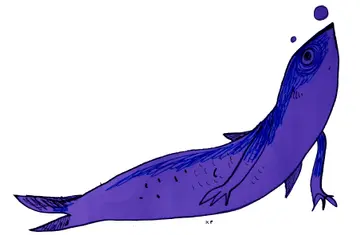Nature’s Guardians: Island Pinhole Borers Restore Kerala Forests

Albin C Jose
Published on Apr 14, 2025, 11:43 AM | 3 min read
Nature once again proves that it has its own healing methods. Senna spectabilis (commonly known as Manja Konna), a destructive tree species, has been invading the forests of Kerala—especially Wayanad—and eradicating native flora over the years.
Senna spectabilis is a deciduous tree native to tropical areas of America. It grows up to 15–20 metres in a short period and produces thousands of seeds after flowering. The thick foliage of the tree suppresses the growth of other indigenous tree and grass species. This results in a food shortage for wildlife, especially herbivores. It also adversely affects the germination and growth of native species, posing a threat to both forest and domestic ecosystems.
Senna Spectabilis, was initially used as shade for coffee plantations, and as a source for firewood, and later became a threat. In Kerala, as it began to destroy the natural diversity of the forests, wild animals started invading human settlements. The forest department has tried hard to cut off them, but they continued to grow and spread again. Over the years, lakhs of rupees have been spent on various attempts to remove Senna spectabilis.
Then came a tiny saviour—beetles just 2 mm in size. Known as Island Pinhole Borers, scientifically Xyleborus perforans, they create pin-sized holes in the trunk of Senna spectabilis and live inside it, ultimately leading to the tree’s destruction. The females carry fungal spores, which they deposit inside the tree. The larvae and other beetles feed on the fungus they cultivate within the trunk. This fungal infection and feeding activity eventually kill the tree. As a result, Senna spectabilis populations are likely to reduce, allowing native flora to regenerate.
The beetles were first spotted in Thakarapadi, within the Muthanga forest range, and are now spreading rapidly across the region. They are native to Indian. In Wayanad alone, 123.86 sq km of forest had taken over by the Senna plants. The problem is also begun in Karnataka and Tamil Nadu. In response, various methods such as debarking, cutting and removal have been experimented. Kerala Forest Department has made a deal with Kerala Paper Products recently, to convert these trees into pulpwood for paper production.
Dr. T. V. Sajeev, who conducted field observations at the Muthanga Range and collected the insects, said: “The borer measures just 2 mm in length but infests trees in large numbers. It completes its life cycle in 16–18 days and either creates galleries in the same tree or moves to nearby ones.” The insects were identified using molecular tools by Arathy M. S., a postgraduate student at St. Joseph’s College, Irinjalakuda.
While the presence of these 'little workers' may seem like a great blessing, it must be ensured that they do not cause any harm to other species. “While this is a welcome development in the efforts to manage Senna Spectabilis, the population buildup of the insects and the response of its natural enemies need careful monitoring” – Dr. Sajeev added.
Overall, these tiny workers are emerging as natural guardians of the biosphere. Forests like Muthanga, once threatened by Senna Spectabilis, are now slowly returning to their natural state, offering a glimmer of hope.










0 comments